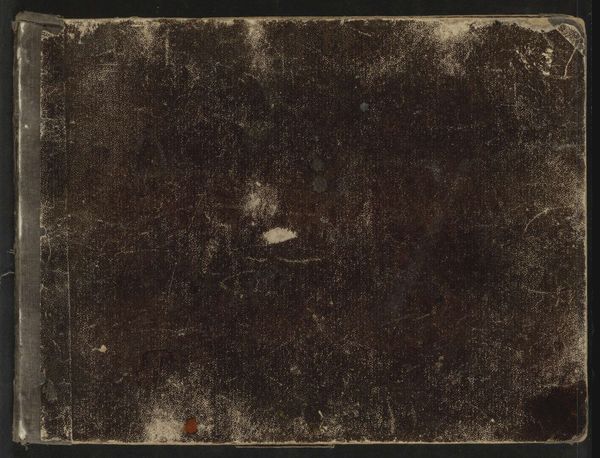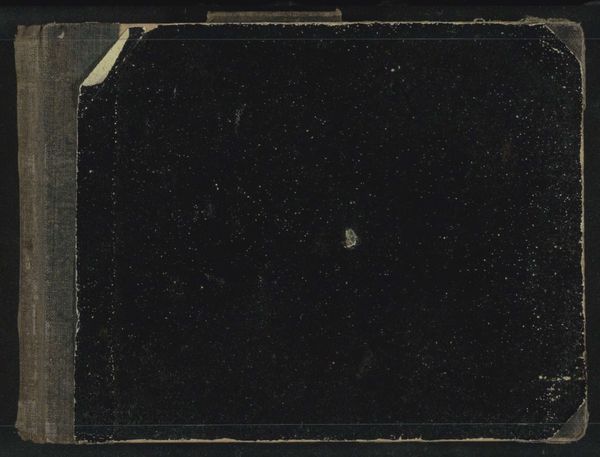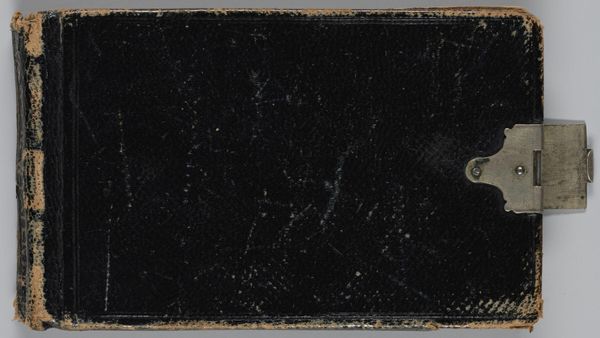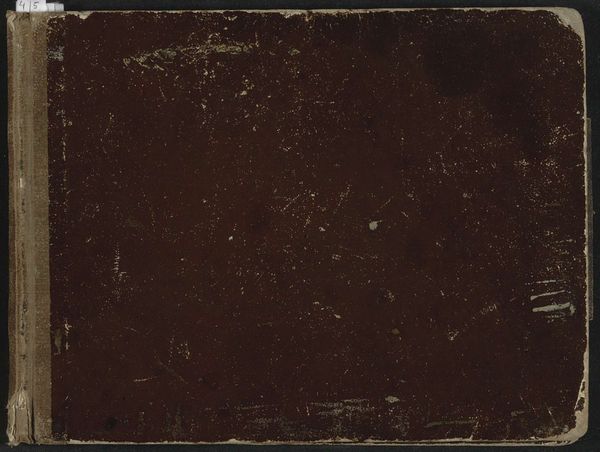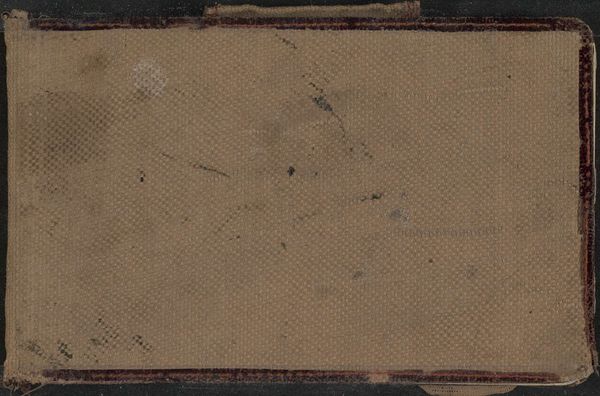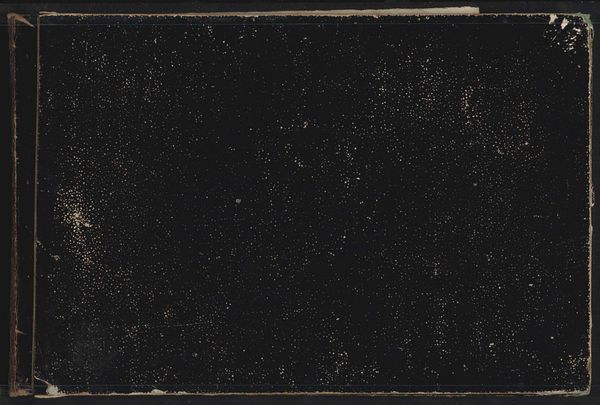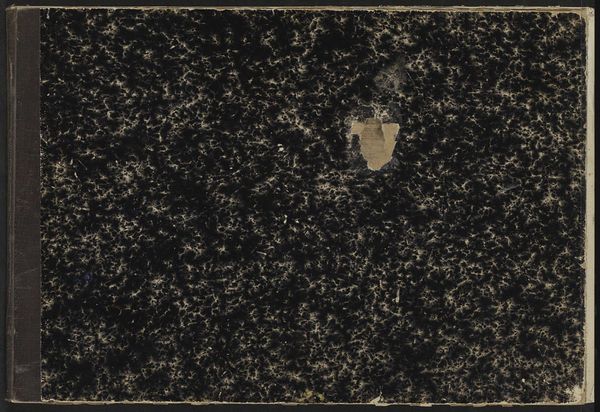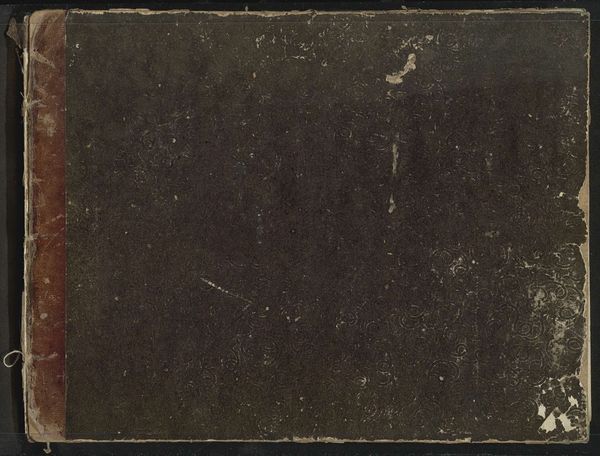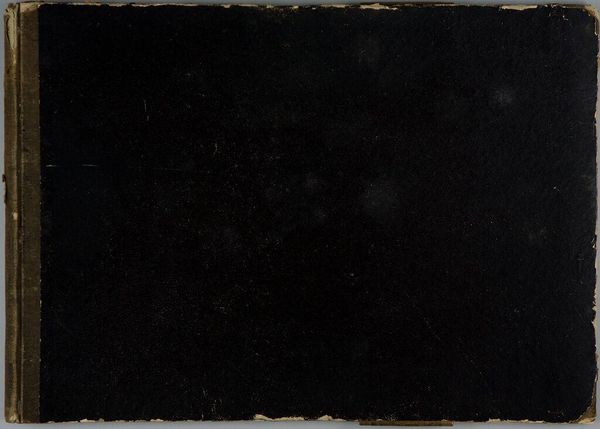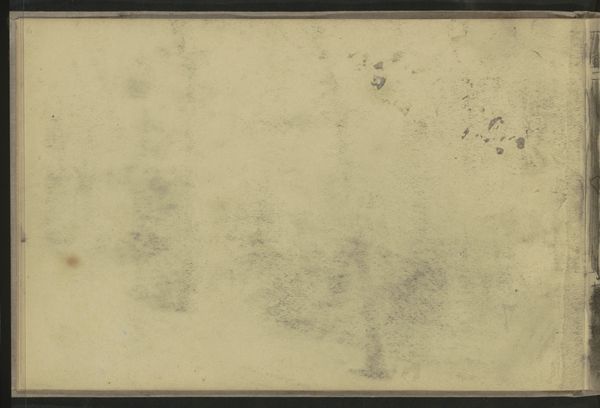
drawing, mixed-media, collage, paper
#
drawing
#
mixed-media
#
collage
#
paper
Dimensions: height 158 mm, width 247 mm, thickness 13 mm, width 483 mm
Copyright: Rijks Museum: Open Domain
Editor: So, we're looking at "Sketchbook with 41 Leaves" by Willem Cornelis Rip, created between 1876 and 1877. It’s a mixed media piece, a drawing and collage on paper. It appears simple, almost minimalist, but the distressed cover intrigues me. What story do you think it tells? Curator: Well, consider the late 19th century art world. Sketchbooks like this weren't just for personal use. They were often integral to an artist's public identity. Exhibiting a sketchbook signaled a certain intimacy with the creative process, an almost performative authenticity. Rip, in presenting this book—whether the cover's damage is intentional or accidental— participates in this tradition. The 'distress', as you call it, could be seen as a visual shorthand for lived experience, artistic struggle, or even a rejection of bourgeois perfection. Editor: That’s interesting. I hadn’t thought about the sketchbook itself as a statement. But, in that case, do you think displaying something that looks worn down was a way to appear relatable, accessible? A reaction against more polished academic art? Curator: Exactly! It is very possible. Think about the burgeoning Realist movement at the time, the desire to depict everyday life, flaws and all. Presenting a pristine sketchbook might have seemed disingenuous. The 'roughness' of the cover, its age, visually aligns Rip with a move away from the pristine and towards the real, the tangible. But who controlled the narrative of that "real"? Was this aesthetic roughness truly democratizing or simply a new form of artistic posturing for a select audience? What do you think about that tension? Editor: That’s fascinating to consider. I’d been viewing the damage as accidental, almost invisible, but I can see now that it definitely adds to the context and influences my impression of Rip as an artist. Curator: It does, doesn’t it? These kinds of details reveal much about the societal roles art occupies and creates, and the tensions within those roles.
Comments
No comments
Be the first to comment and join the conversation on the ultimate creative platform.
